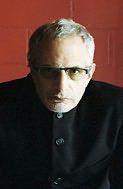- Shopping Bag ( 0 items )
From Barnes & Noble
Steely Dan keyboardist, front man, and co-founder Donald Fagen is not your typical self-promoting rocker. Thus, it is no surprise that his autobiography is not a chest-thumping reprise of triumphant tours and sexual conquests. Instead, it records the coming-of-age of a young Jersey guy, which he credits to an odd assortment of influences, including but not limited to Ray Charles, Tina Turner, Philip K. Dick, Blake Edwards, Jack Kerouac, Harry Mancini, Jean Shepherd, and the Boswell Sisters. Sometimes quoting from his own early journals, Fagen recaptures the excitement of youth with a candor all its own. Editor's recommendation.





Overview
A witty, candid, sharply written memoir by the cofounder of Steely Dan
In his entertaining debut as an author, Donald Fagen—musician, songwriter, and cofounder of Steely Dan—reveals the cultural figures and currents that shaped his artistic sensibility, as well as offering a look at his college days and a hilarious account of life on the road. Fagen presents the “eminent hipsters” who spoke to him as he was growing up in a bland New Jersey suburb in the early 1960s; his ...